The secret to driving traffic lies in smart long-tail keyword research – an increasingly crucial element that significantly benefits businesses aiming to rank higher on search engine results pages (SERPs). This comprehensive guide will empower you to take control of your content by delving into the realm of long-tail keywords:
- Understanding their significance.
- Strategies for effective targeting.
- Busting common myths.
- Analyzing relevant case studies.
- Identifying tools that can optimize your results.
Read on to get ahead of the curve and dominate the industry.
What Are Long-Tail Keywords?
Long-tail keywords are precise and targeted keyword phrases or searches consisting of three or more words that users enter when looking for specific information online. These search terms may have lower search volumes than short-tail or primary keywords but boast significantly less competition and cater directly to user intent. Consequently, they offer improved opportunities to rank higher on SERPs and drive focused organic traffic with increased chances of conversion.
What is an example of a long tail keyword?
To illustrate how long-tail keywords differ from standard keywords, consider these examples:
- Common Keyword: “Digital Marketing”
- Long-Tail Keyword Example 1: “Best Digital Marketing Strategies for Small Businesses”
- Long-Tail Keyword Example 2: “How Digital Marketing Enhances Customer Retention Rates”
Long-tail keywords convey additional details and purpose instead of shorter phrases which might yield broader search results.
What is Long Tail Keyword Research?
Long tail keyword research refers to identifying and analyzing more specific and target keywords or phrases that consist of three or more words. These longer, niche-focused terms are usually less competitive in search rankings than broader, high-traffic keywords, making them valuable tools for creating compelling content and SEO strategies.
Long-tail keyword research aims to find unique, low-competition phrases that potential customers may use when searching for products, services, or answers related to your business niche. To target these potentially overlooked opportunities, you need to consider the following:
- User Intent: Understand users’ search motivations and anticipate their possible queries.
- Search volume Data: Determine the popularity and demand for specific keyword phrases by measuring how frequently they are being searched.
- Keyword difficulty: Assess the level of competition surrounding a particular keyword phrase to gauge its potential within search engine results pages.
By conducting thorough long-tail keyword research, you can uncover numerous valuable yet underutilized search terms that can help drive highly qualified traffic to your website.
What Makes Long-Tail Keywords So Great?
Long-tail keywords hold immense potential for website owners, marketers, and content creators. Their numerous benefits can lead to more targeted traffic and higher conversion rates. Let’s explore the main reasons that make long-tail keywords so valuable.
Long-Tail Keywords Are (Generally) Less Competitive
One of the primary advantages of focusing on long-tail keywords is that they are less competitive when compared to short-tail ones. Since these multi-word phrases are more specific, fewer websites attempt to rank for them. This means you have a better chance of ranking higher among search engines by effectively targeting such long-tail keyword research.
The reduced competition also leads to lower advertising costs and more efficient use of your marketing budget should you decide to expand into paid advertising channels like Google Ads or social media marketing.
Long-Tail Keywords Are (Generally) Easier To Target
With their increased specificity, long-tail keywords allow you to create highly relevant and focused content that caters explicitly to user intent. By crafting articles that target specific queries, readers will find precisely what they were searching for, leading to improved user experience and increased dwell time on your site.
Moreover, it’s easier to incorporate long-tail keywords seamlessly into your content instead of shorter ones which often require extra effort for natural incorporation without compromising readability or quality.
There Are Lots of Long-Tail Keywords
Another attractive aspect of long-tail keywords is their sheer abundance – countless combinations are available across topics and industries!
Data shows, there are just 31,000 keywords with search volumes of more than 100k searches per month; on the other hand, there are 3.8 billion keywords that have fewer than 10 searches per month. (Ahrefs, 2021)
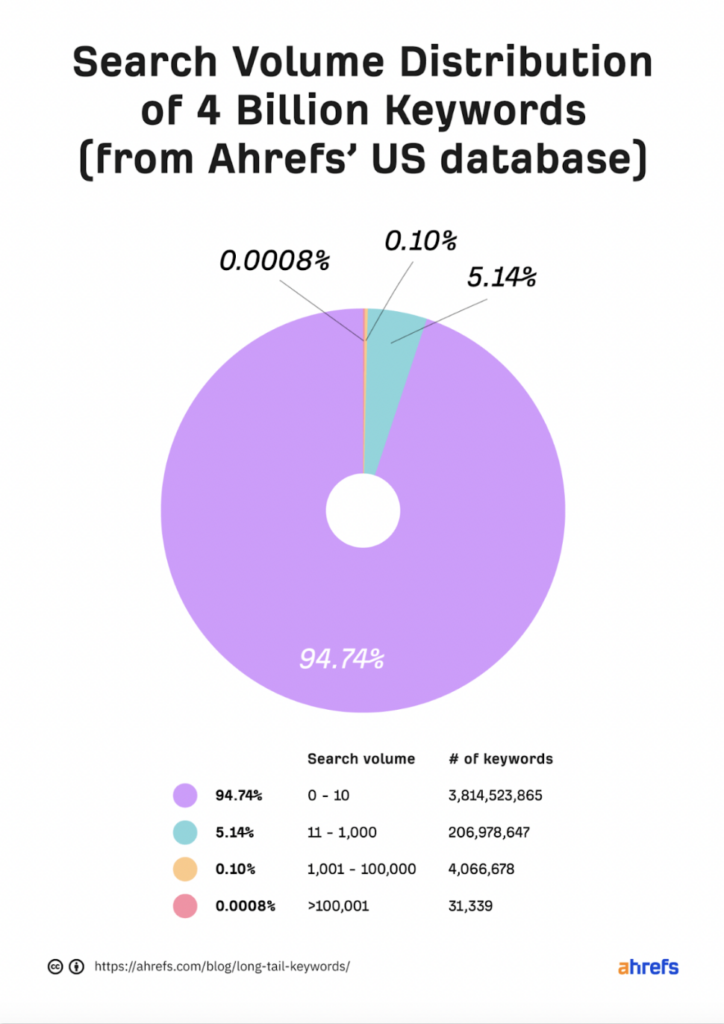
This helps avoid overlap with other websites vying for the same subject matter while allowing room for building niche authority around diverse topics.
A single topic could have hundreds or even thousands of variations depending upon factors like location, demographic preferences, colloquialisms, etc., providing an extensive pool of options when selecting which long-tail keyword research tool to use for your campaigns.
By tapping into this vast expanse of possibilities, content creators and marketers have more freedom to experiment with different angles and sub-topics based on their unique insights, solidifying their market position as thought leaders.
Benefits of Long-Tail Keywords

Optimizing your content with long-tail keywords serves several significant advantages. Many experts in the field have found success in implementing a long-tail keyword strategy. Explore three notable benefits: easier ranking, targeted traffic, and cost-effective advertising.
Easier to Rank
One of the primary reasons for targeting long-tail keywords is that they are often easier to rank on search engines. Since these keywords consist of more specific phrases with relatively low search volume, competition tends to be less intense than short-tail keywords.
As a result of the reduced competition, achieving higher rankings on search engine results pages (SERPs) becomes more achievable even for smaller websites or new players in the industry. Utilizing a long-tail keyword research tool can further assist you in identifying untapped opportunities with low SEO difficulty.
Targeted Traffic
Another advantage of incorporating long-tail keywords into your content is attracting highly targeted traffic to your website. These specific longer phrases generally reflect a more precise intent from users searching online. Thus, it ensures that people who find your site are looking precisely for what you offer.
For instance, someone searching for “women’s black leather ankle boots size 7” knows precisely what they want and has higher purchasing intent than someone browsing “boots.” By attracting such focused visitors to your website, you maximize the chances that they will convert into customers by answering their queries and meeting their needs.
Cost-Effective Advertising
Long-tail keywords also present an excellent opportunity for organizations aiming to manage their budgets efficiently while investing in digital marketing campaigns like Google Ads. Given the lower competition associated with these unique phrases, bidding on such terms should require less spending per click than targeting high-volume short-tail keywords.
Ultimately, by including long-tail keyword research as an essential element of your paid advertising strategy, you can ensure better utilization of funds without compromising on desired outcomes such as increased traffic or higher conversion rates. Moreover, the targeted audience resulting from long-tail keyword advertising can significantly impact your return on investment (ROI).
The two types of long-tail keywords
When conducting long-tail keyword research, it’s essential to understand the different types of long-tail keywords. Grasping these distinctions will help you tailor your content and SEO strategies more effectively. In this section, let’s explore the two primary types: supporting long-tail and topical long-tail.
Supporting Long-Tail Keywords
Supporting long-tail keywords are phrases that complement the main topic or focus keyword of a particular piece of content. These terms act as secondary targets within your article, boosting its visibility in search results for several queries organically.
Incorporating supporting long-tail keywords into your content has multiple benefits:
- Strengthening semantic relevance: By building on your primary theme with related subtopics, you create a richer context for search engines to understand your content.
- Enhancing user experience: Providing additional information on related queries can satisfy users seeking comprehensive answers, making them more likely to stay longer on your site.
- Improving ranking potential: Targeting multiple relevant phrases increases the opportunities for earning higher ranks across various search queries.
For instance, if you’re writing an article about “best laptops for graphic design,” potential supporting long-tail keywords could include:
- Best operating systems for graphic design
- Graphic design laptop specs requirements
- Top laptop brands for designers
Topical Long-Tail Keywords
On the other hand, topical long-tail keywords correspond to narrower but focused subject areas within a broader theme. Unlike supporting keywords that serve as additional elements to an overarching concept, topical long-tails warrant different content due to their distinct subject matter.
Creating individual articles around these topical phrases allows you to build authority within specific niches and boost overall domain expertise. Additionally, this approach enables you to cater to specialized audience segments searching for precise information.
For example, if your primary focus is on head term “fitness,” possible topical long-tail keywords may include:
- Yoga for stress relief
- High-intensity interval training for weight loss
- Bodyweight exercises for beginners
When researching long tail keywords with tools like KWFinder or Google Ads Keyword Planner, keep an eye out for supporting and topical phrases that can bolster the visibility and relevance of your content.
Finally, remember that targeting long-tail keywords effectively requires incorporating them naturally and strategically within your content. Always prioritize user experience over keyword stuffing to provide valuable information that genuinely addresses searchers’ inquiries.
How to Find Long-Tail Keywords

Effective long-tail keyword research ensures high-ranking and engaging content for your target audience. Here, I will discuss several strategies that can help you identify long-tail keywords:
1. Examine Autocomplete Suggestions in Google Directly
A straightforward way to discover specific long-tail keywords is by leveraging Google’s autocomplete feature. As you begin typing a query into the search bar, Google automatically suggests similar phrases reflecting popular related searches. This method can be instrumental as a starting point to explore potential long-tail keywords relevant to your niche.
2. Use Question Modifiers Like “What” and “How”
Incorporating question modifiers such as “what,” “how,” “where,” “when,” or “why” can lead you toward more specific and valuable long-tail keyword phrases. These modifiers not only help formulate informative queries but also assist in identifying user intent behind those searches. For instance, when searching for healthy meal ideas, use phrases like “How do I cook healthy meals?” or “What are some easy-to-make healthy dishes?”
3. Add Qualifiers to Short Tail Keywords
Attaching qualifiers—additional descriptive words—to short-tail keywords can yield more targeted long-tail keywords related to your topic. Typical qualifier examples include:
- Location (e.g., a digital marketing agency in London).
- Quality (best running shoes).
- Time frame (summer vacation destination).
- Audience-specific terms (software for small businesses).
Refining your short tail keyword increases relevance and competitiveness across search engine results.
4. Look at Your Internal Site Search History
Your website’s internal site search history offers a treasure trove of information on visitors’ queries, helping you gauge their interests and the problems they’re trying to solve within your subject matter. Examining this data can provide insights into possible avenues for expanding your content with enticing long-tail keyword opportunities without needing an external tool.
5. Research Your Competitors
Analyzing competitors’ long-tail keywords and strategies can help uncover hidden gems you might have overlooked in your niche. By examining their valuable content, you can identify keywords appearing repeatedly or garnering significant attention. Utilize tools like Semrush, Ahrefs, or Moz to conduct comprehensive competitor keyword research.
6. Run a Gap Analysis
Gap analysis helps you identify potential areas of improvement by comparing your current content’s focus against that of high-performing competitors. Investigating these informational gaps can unveil attractive long-tail keyword opportunities for optimization or content development. Use tools such as Google Analytics or mix in manual assessments to find underserved topics or phrases warranting future exploration.
10 Tools for Long Tail Keyword Research

Conducting thorough long-tail keyword research is essential in creating a successful content strategy. Fortunately, numerous tools help you discover and analyze these valuable keywords. This section explores ten amazing tools catering to long-tail keyword research.
SEOwind
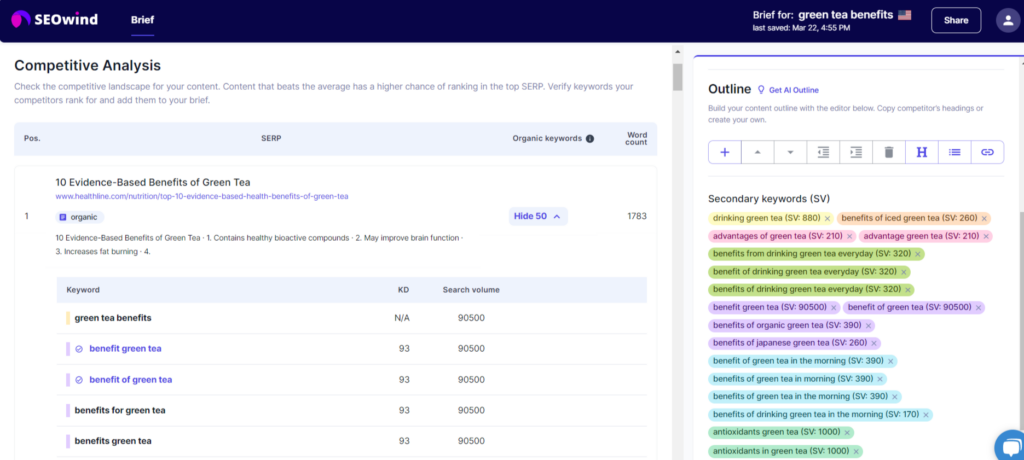
SEOwind is an all-in-one SEO and AI Writing tool offering various functionalities, including long-tail keyword research.
By analyzing top-performing content within your niche, SEOwind identifies popular keywords, including highly valuable long-tail keywords that your competitors’ pages rank. This essential intel empowers you to select contextually relevant keywords when crafting your articles, allowing you to outrank other content in your industry. It provides data, including their monthly volume search and keyword difficulty.
Moreover, SEOwind goes above and beyond by collecting questions from platforms like Google, Quora, and Reddit, presenting you with a treasure trove of long-tail keyword opportunities.
AnswerThePublic
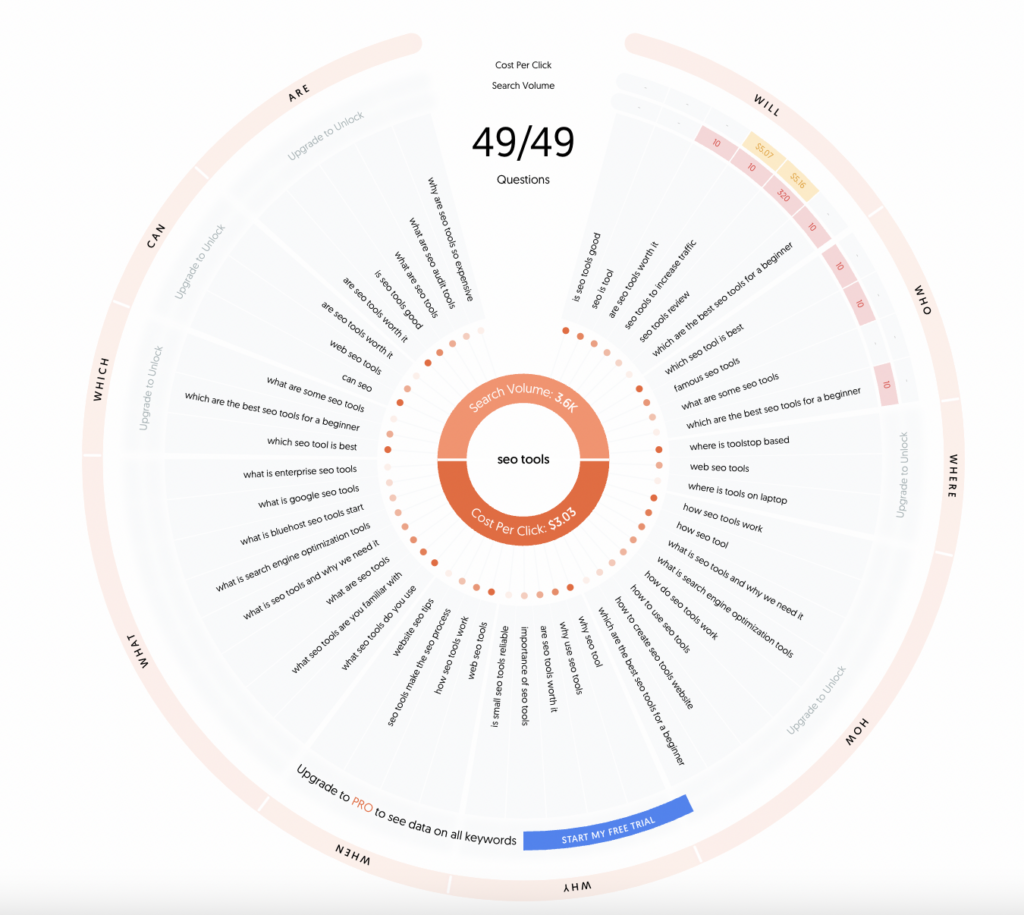
AnswerThePublic is a creative platform explicitly designed to generate visualizations of user questions about specific topics. This tool provides insights into common inquiries, allowing content creators to quickly target relevant long-tail keywords based on user intent.
GrowthBar
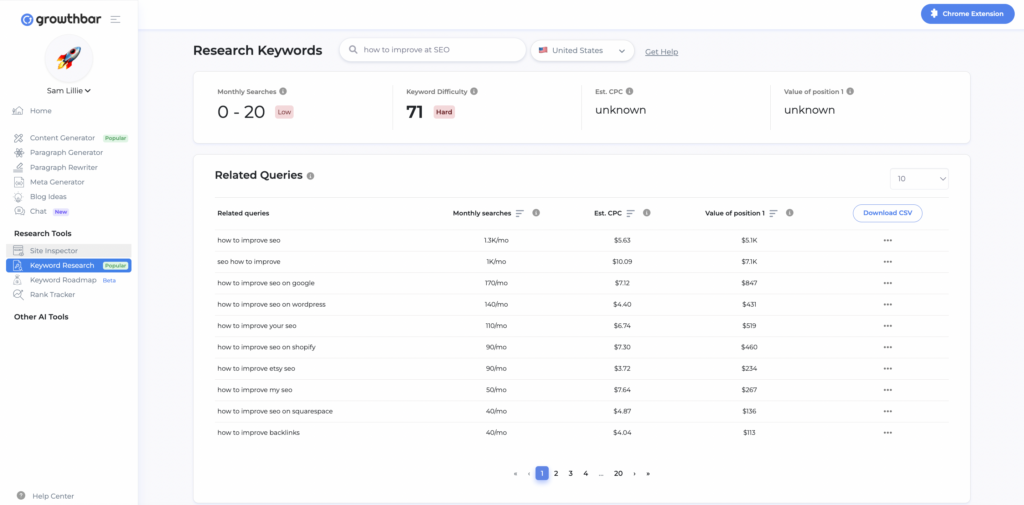
GrowthBar caters primarily to content marketers looking for smart ways to streamline their SEO efforts. This Google Chrome extension presents users with crucial information on any website: from domain authority and social shares to backlinks and detailed keyword suggestions.
Google Ads Keyword Planner
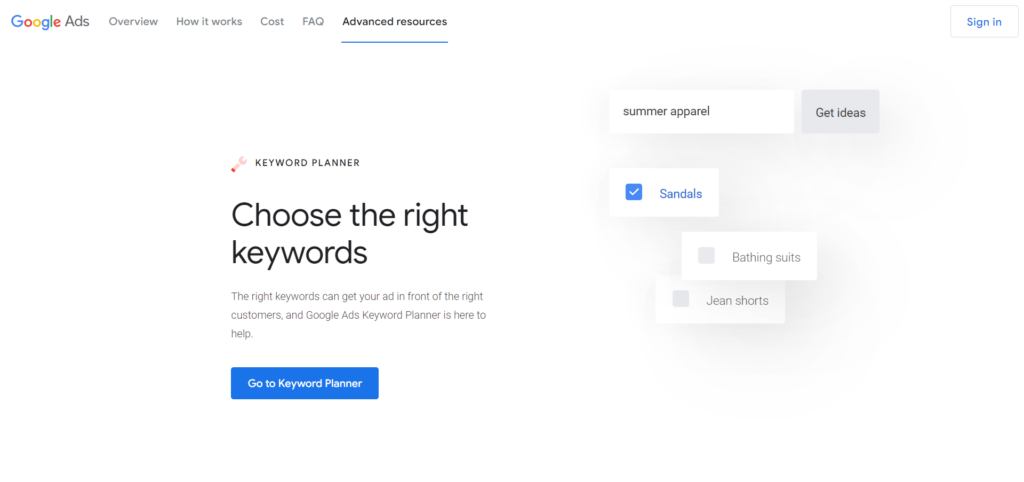
A classic within keyword research tools, Google Ads Keyword Planner, provides comprehensive search data straight from the source – Google search itself. Unearth sought-after details like search volumes, estimated CPC rates, or competitive metrics using its extensive suite of features.
Keywords Everywhere

Keywords Everywhere is a browser extension for Chrome and Firefox. It simplifies your workflow by showing useful statistics like monthly search volumes or CPC within your favorite platforms like Google Search Console or Moz Open Site Explorer. Be informed while discovering potential long-tail keywords across multiple platforms with minimal effort.
Keyword Tool Dominator

Keyword Tool Dominator leverages autocomplete suggestions offered by popular search engines like Amazon, eBay, YouTube, Bing, etc., ultimately uncovering unique long-tail keyword opportunities for your niche industry. Diversify your market reach with the help of this versatile tool.
KWFinder by Mangools
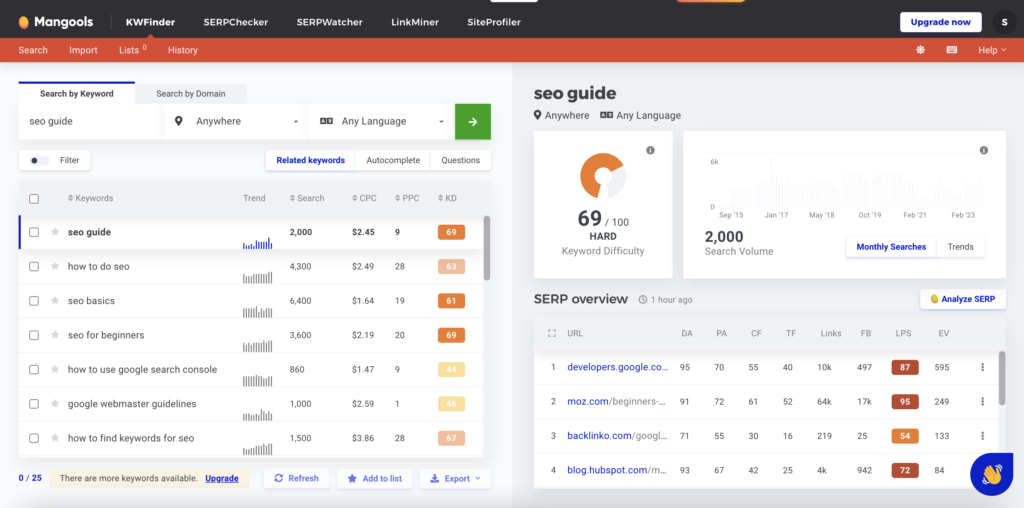
KWFinder prides itself on its user-friendly interface that makes discovering long-tail keywords with low SEO difficulty a breeze. With an array of filtering options, keyword lists, and insightful metrics, it helps content creators strike the right balance between relevance and attainability in their quest for better SERP rankings.
LongTailPro
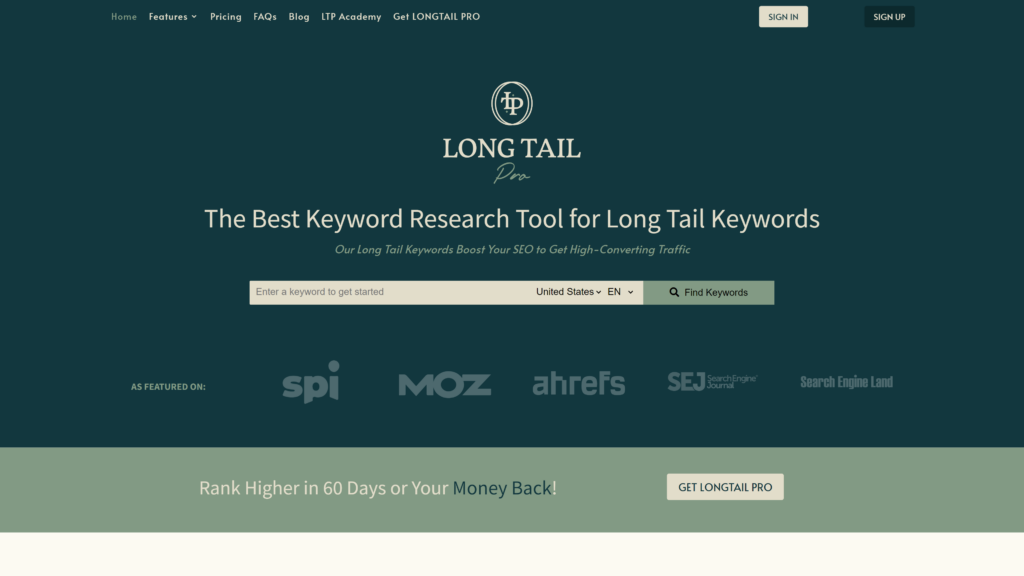
LongTailPro is a powerful tool designed specifically for in-depth long-tail keyword research. It offers a detailed analysis of keyword competitiveness, profitability indications, and even suggestions on incorporating these keywords into your content strategy.
Semrush
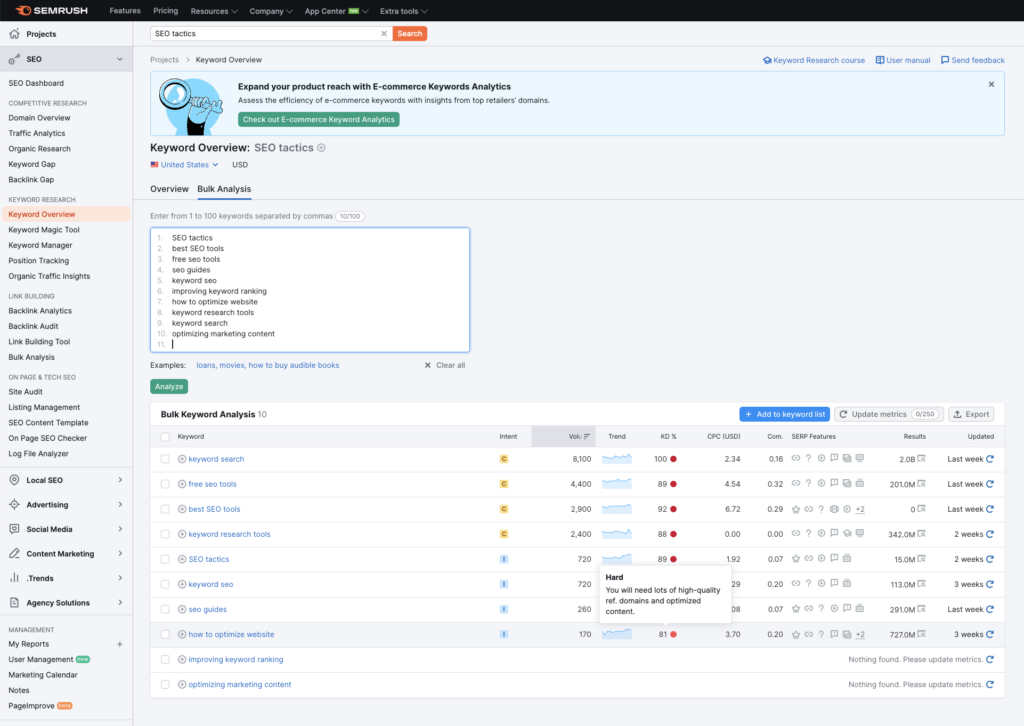
Acknowledged as one of the most comprehensive tools within the digital marketing world, Semrush offers far more than just long-tail keyword research – though that’s undoubtedly included too! Its features include backlink analysis, position tracking, and on-page optimization recommendations.
Ubersuggest
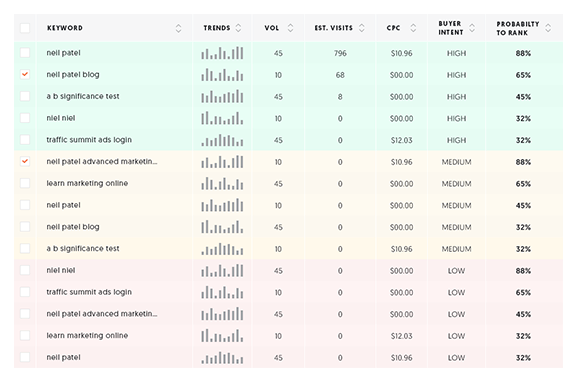
Ubersuggest presents users with a cornucopia of information from a straightforward search:
- Discover large lists of closely related keywords.
- Access statistics like volume or CPC estimates.
- Receive competitor insights all at once.
Created by renowned digital marketer Neil Patel, this reliable resource has become an invaluable solution in many marketers’ arsenals.
How to Target Long Tail Keywords Effectively
Incorporating long-tail keywords into your content is essential for driving targeted traffic to your website. They can help you rank higher in search engine results and attract potential customers seeking your solutions when implemented correctly. Here are three effective strategies for targeting long-tail keywords.
1. Use Keywords Naturally
One of the most important things to remember when incorporating long-tail keywords into your content is to use them naturally. Keyword stuffing – overusing a particular keyword or phrase – can result in search engines penalizing your content, pushing it further down the rankings instead of boosting its visibility.
To ensure that your content flows smoothly and reads well:
- Integrate 3-5 relevant long-tail keywords per section
- Ensure these terms align with the topic and theme of the article
- Write engaging, informative, and conversational content that incorporates these key phrases seamlessly
Resist the temptation to force-fit keywords into sentences inappropriately; doing so will only hinder your content’s readability and overall quality.
2. Place Your Keywords Strategically
Effective keyword placement significantly affects how well an article performs on search engines. While using long-tail keyword research tools is critical, finding strategic locations for inserting these phrases will maximize their impact:
- Title: Incorporate a primary long-tail keyword in the title while maintaining clarity.
- Subheadings: Utilize relevant secondary long-tail keywords within subheadings where feasible.
- Introductory paragraph: Naturally integrate one or two primary long-tail keywords near the beginning.
- Body text: Evenly distribute additional long-tail keywords throughout the content.
- Meta description: Craft a compelling meta description featuring primary and secondary long-tail keywords.
- Image alt text: Include descriptive long-tail keywords alongside other useful descriptors as the alt text for images.
Strategic keyword placement helps readers, and search engines quickly identify the main ideas of your content, enhancing its relevance and visibility.
3. Consider a User’s Search Intent
Understanding user intent is essential in targeting long-tail keywords effectively. When discovering new long-tail keywords to target, here are some considerations:
- Informational queries: If users mainly seek information, focus on adding detailed explanations and solutions that answer their inquiries. Phrases beginning with question modifiers like “what” or “how” tend to be informative.
- Navigational queries: These searches pertain to users searching specific websites or resources. Utilize branded terms, topical descriptions, and other relevant phrases to guide users searching for your brand or content.
- Transactional queries: Searches involving transactional intent involve purchasing products or services. To cater to these consumers, emphasize promotional language and include purchase-related keyphrases like “buy,” “discount,” or “deal.”
By empathizing with users’ motives behind their keyword searches, content creators can develop relevant materials that rank highly and drive website engagement and conversions.
Myths About Long Tail Keywords

In the realm of SEO and digital marketing, several myths and misconceptions surround long-tail keywords. As an experienced content writer, I’m keen to debunk these myths to understand better how long-tail keyword research can benefit your content strategy.
Myth 1: Long-Tail Keywords Are Too Competitive
Some people believe that long-tail keywords are highly competitive keywords due to their specificity. However, this is not always the case. Compared to short-tail keywords, which often have more significant search volume and competition, competitors in specific niches typically overlook long-tail keywords. Focusing on these less-competitive phrases gives you a better chance of ranking high in search results.
Myth 2: They Don’t Drive Significant Traffic
Another myth is that targeting long-tails won’t bring substantial traffic because they have low search volumes individually. While it’s true that each long-tail keyword may have a lower search volume compared to broader terms, the cumulative effect of targeting multiple relevant long-tails can deliver consistent and targeted traffic over time.
Myth 3: All Long-Tail Keywords Are Easy To Rank For
Though many long-tail keywords inherently possess low competition due to their specificity, not all will lead to easy rankings. Some niches might still present stiff competition even for longer phrases; hence diligent research using reliable keyword tools, like Semrush or Ubersuggest is crucial before targeting any particular set of keywords.
Myth 4: Focusing Only on Long-Tails Will Guarantee Success
While it’s essential to prioritize long-tails in your optimization efforts, solely relying on them isn’t advisable either. A balanced approach encompassing short and long-tailed phrases ensures a comprehensive keyword strategy that caters to user intent across various stages of their browsing journey.
By recognizing and debunking these myths surrounding long-tail keywords, marketers become more adept at optimizing their content and developing a robust, well-rounded keyword strategy that maximizes organic traffic and improves overall online visibility.
Common Questions on Long-tail keyword research

As you delve deeper into long-tail keyword research, you commonly encounter doubts and questions regarding the subject. To help clear up some of these concerns, let’s tackle one of the most frequently asked questions in this area.
What is the difference between long-tail keywords and keywords?
The primary distinction between long-tail keywords and keywords (known as short-tail or head keywords) lies in their length, specificity, search volume, and competition. Understanding these differences will assist you in strategizing your content marketing and SEO efforts more proficiently.
- Length: Long-tail keywords are longer phrases consisting of three or more words. In contrast, short-tail keywords comprise one or two terms. For example, a short-tail keyword might be “running shoes.” In contrast, a corresponding long-tail keyword could be “best lightweight running shoes for women.”
- Specificity: A telling characteristic of long-tail keywords is their focus on a particular subset or niche within a broader topic. This precision makes them incredibly useful when catering to specific user needs and interests. Short-tail keywords are rather general and broad in scope.
- Search Volume: Long-tail keywords typically have lower search volumes than head terms due to their precise nature. However, this doesn’t diminish their importance – quite the opposite! By collectively targeting an array of carefully chosen long-tail keywords with low SEO difficulty, you may garner similar traffic levels as a high-volume short-tail term.
- Competition: One significant advantage of using long-tail keywords is that they tend to be less competitive than generic head terms. With fewer businesses vying for attention in SERPs (Search Engine Results Pages), optimizing for these narrow-focus phrases provides more significant opportunities to rank higher.
The main differences between long-tail and regular keyword searches revolve around their length, specificity, search volume, and competitiveness. By conducting thorough long-tail keyword research using a tool like a long-tail keywords generator or long-tail keyword finder, you can harness the perks of these precise terms to attract targeted search traffic, improve organic rankings and make your content more relevant to potential customers.
What’s the Process for a Long-Tail Keyword Research?
Long-tail keyword research is an essential component of a successful SEO strategy. Uncovering and targeting these specific, low-competition phrases can drive targeted traffic to your site and improve overall rankings. Here’s the process for conducting long-tail keyword research:
Step 1: Identify Your Main Topics
Firstly, consider the core topics your website revolves around, which will serve as seed keywords. These are general, broad keywords that reflect your niche or industry.
Step 2: Generate Long-Tail Keywords Ideas
Leverage tools like AnswerThePublic, Ubersuggest, and Google Autocomplete to generate potential long-tail keyword ideas using your seed keywords. Additionally, consider user intent (informational or transactional), utilizing question modifiers like “what” and “how,” as well as adding qualifiers to short-tail keywords.
Step 3: Analyze Competitiveness and Search Volume
To ensure your long-tail keyword list is valuable, analyze search volume using tools like Google Ads Keyword Planner or SEMrush. Ideally, focus on terms with moderate search volumes but low competition levels.
Step 4: Assess Relevant Metrics
Determine each keyword’s difficulty score through platforms like KWFinder or LongTailPro. These scores indicate how challenging it would be to rank in organic search results for specific terms. Target keywords with lower difficulty ratings while keeping related metrics such as cost-per-click (CPC) in mind.
Step 5: Finalize Your List of Long-Tail Keywords
Revise your list by eliminating any less-effective options based on the analysis from previous steps.
Step 6: Integrate Keywords into Your Content Strategy
Seamlessly incorporate selected keywords into your content by prioritizing natural usage and speech patterns while placing them strategically throughout the text. Remember to address their corresponding user intents to impart value and foster engagement.
Step 7: Analyze, Optimize, and Iterate
Continuously monitor your content performance by tracking specific keyword rankings over time. Utilize the insights gleaned to optimize existing materials and evolve your SEO approach for maximum effectiveness.
Adopting this systematic process for long-tail keyword research can elevate your website’s visibility in search engine results pages (SERPs), ultimately growing your audience while enhancing conversions. So take control of your content today with smart long-tail keyword research!


